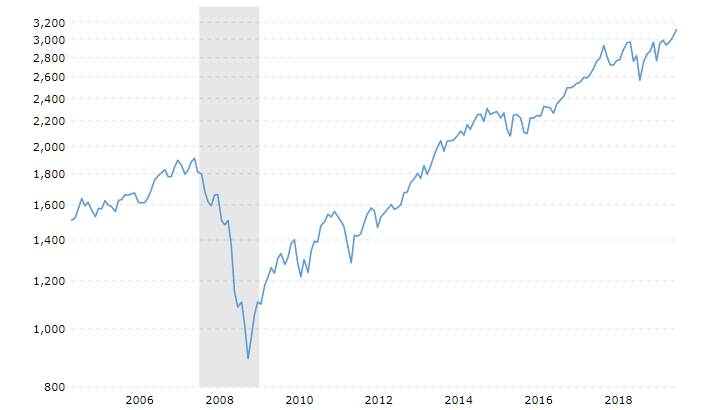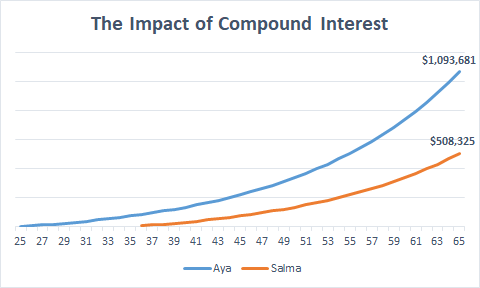
How many times have you heard people who are planning to invest in the stock market say: “The market isn’t performing well at the moment, I will wait for it to bounce back before I invest”? Let’s decipher this statement.
By “markets not performing well” people typically mean prices of stocks have dropped over time. The common behavior is people tend to avoid the stock market when prices are low (or dropping), and get excited to invest when prices are hitting all time highs. Funny right? Would anyone act this way if it was any other type of investment? No.
Assume you go shopping and the store is having a sale, would you say “oh no, I’ll wait for the sale to go off and buy at full price later” ? My guess is no, so why would anyone wait for markets to “bounce” back before investing?
A market downturn turns into a market correction when prices drop by 10% or more. On average, market corrections last for 3 – 4 months before asset prices start recovering. While a market correction might sound scary, it shouldn’t be, corrections come with many advantages. This post will tackle how these market corrections (or downturns) can provide good investment opportunities, why you shouldn’t bother predicting one and the importance of starting now.
Market corrections slow down over-inflated economies
Financial markets keep on rising in value as long as there are people who are willing to inject money in them. However, money is limited. Once everyone is invested in the financial markets and there is no one new to keep it on the rise, things start to slow down. Corrections make sure that people are exiting the market and putting money aside. This way, the prices of the securities is no longer inflated, and there is a chance for them to rise again once optimism hits the markets.
Financial asset prices during good times inflate to the point in which they stop reflecting the true underlying value of the physical asset. People who are not very knowledgeable in how the financial markets work are usually the ones who hop on the investing bandwagon as they see other people making money, and these investors tend to be the ones that start inflating prices, but they are also the same investors who panic and sell their investments as soon they start losing money. Market corrections crowd out these investors to make sure that assets are restored to their true prices.
You can make very high returns if you take advantage of a down turn/market correction
Corrections cause market prices to drop as investors start getting anxious and liquidate their investments. 18th century banker Baron Rothschild once said: “The time to buy is when there’s blood in the streets”. When people are afraid and everyone is selling, prices drop very rapidly, and that’s when you should invest in the stock market. You make money by buying at low prices, and selling at high prices later on.
Here’s a graph of how the S&P 500 performed in the last 13 years :

Source: https://www.macrotrends.net/2324/sp-500-historical-chart-data
In 2009, the average closing price of the S&P 500 was $948.5. In 2019, the average closing price of the S&P 500 is $2,879.83. People who invested in the S&P in 2009 when the general consensus was very negative (after the 2008 financial crisis), would have made around 303% return on their investment if they held unto it till 2019. This goes to show the bargains that are available in the market when people are afraid.
Companies are growing and will continue to grow for the foreseeable future. Even though at times it seems like we’re passing through very high economic tension, if the financial markets survived several world wars, the cold war, and the 2008 financial crisis, they could definitely withstand other periods of uncertainty.
Play the long game with compound interest
“Compound interest is the 8th wonder of the world. He who understands it, earns it; he who doesn’t, pays it.” – Albert Einstein
Compound interest is the interest you gain on top of interest. When you reinvest the interest you receive on your principle, the next time the interest rate is applied, it will be applied on a larger sum of money, which would lead to higher interest payments.
To further explain how compound interest works, consider Aya and Salma. Aya is 25, and Salma is 35, they both start investing $5,000 per year until the age of 65. Assuming the market returns 7% per year, how much do you think the difference in return will be?

The graph is used for illustrative purposes. Granted the difference with the amount invested between the two is just $50,000 ($5,000 x 10 years), the difference in returns – over $500,000 – is wide, more than double what Salma made and that’s thanks to compound interest over the 10 years period.
This goes to show that when it comes to investing, the longer the time horizon, the higher returns due to compound interest. Therefore, make sure to invest as early as possible and to hold on to your investment in order to benefit as much as possible from the 8th wonder of the world.
Do not try to predict the next market downturn
Even though a market downturn could be healthy, and investors could benefit from purchasing stocks at a discount, the odds are against investors who are trying to predict when the next market downturn will happen.
Now that we’ve talked about the pros of a downturn, it is important to keep in mind that a market downturn cannot be anticipated.
Market downturns are often associated with recessionary periods (a period of declining economic performance). Usually, asset managers and banks publish reports about the possibility of a recession occurring and they base it on the so called “recession indicators”. Those indicators can vary from the yield curve, consumer confidence, employment data, GDP or volatility index. However, what many may not know is that those indicators have missed their prediction of a recession most of the times.
The yield curve is known as the supply and demand of money in the market. Some analysts link an inverted yield curve; which is characterized by long term debt instruments having higher yields than the short term one; to being a recession indicator. The rationale behind this is that if you’re not willing to lock up your money in the long term then you’re worried about a recession. However, research has shown that the yield curve has not always been successful at predicting a recession.
If economic experts, most of the time, fail to predict when a recession is coming, you will probably also never know when the next market downturn is going to happen. Not knowing when asset prices are going to drop, does not mean that you should stop investing until you have a clear view of the market. Warren Buffett, CEO of Berkshire Hathaway and one of the most successful investors in history, once said: “Do not watch the market closely.”
Rumors about a recession have been looming since 2016, but since then, the S&P 500 has actually increased in value by over 150%! Therefore, instead of trying to predict when the next market correction is going to happen, stick to Warren Buffet’s advice of not having concern for market fluctuations, and keep investing consistently.
Ready to invest in your future?
December 2, 2019